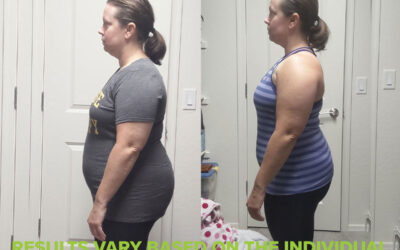Cravings for sugar and carbohydrates are a common struggle for many people, particularly when pursuing weight loss or improving overall health. These cravings often feel overwhelming and can derail even the most well-intentioned plans. At Personalized Nutrition Concepts, I’ve worked with countless individuals who face this challenge, and I’ve seen how targeted strategies can make all the difference. In this blog, I’ll share effective tips and tricks to help you overcome sugar and carbohydrate cravings, paving the way for better health and sustainable weight loss.
Why Do We Crave Sugar and Carbohydrates?
Understanding the root cause of cravings is the first step in addressing them. Sugar and carbohydrate cravings are often linked to fluctuations in blood sugar levels. When your blood sugar drops, your body signals the need for a quick energy boost, often in the form of sugary or starchy foods. Additionally, stress and hormonal imbalances, particularly during menopause, can intensify these cravings.
Emotional factors also play a significant role. Many people turn to sugary or carb-heavy foods for comfort or as a way to cope with stress and fatigue. Over time, this creates a cycle of dependency, where the temporary relief from consuming these foods is followed by an energy crash, leading to more cravings.
My Personal Experience with Clients
Over the years, I’ve helped clients identify and overcome their cravings through personalized strategies. For example, one client, Emily, came to us frustrated by her late-night sugar binges. After analyzing her diet and habits, we discovered that her cravings were linked to a lack of balanced meals earlier in the day. By addressing the root causes and making small, sustainable changes, Emily was able to regain control over her eating habits and achieve her weight loss goals.
Tips and Tricks to Overcome Cravings
Focus on Balanced Meals
One of the most effective ways to reduce cravings is by eating balanced meals that stabilize blood sugar levels. Include a combination of lean protein, healthy fats, and complex carbohydrates in each meal. This combination helps keep you full and provides sustained energy, reducing the likelihood of sudden hunger or cravings.
For instance, a meal of grilled chicken, quinoa, and steamed broccoli with a drizzle of olive oil not only nourishes your body but also prevents the blood sugar spikes and crashes that trigger cravings.
Incorporate High-Fiber Foods
Fiber-rich foods are a game-changer when it comes to managing cravings. Foods like vegetables, fruits, legumes, and whole grains slow down digestion and promote feelings of fullness. This helps regulate blood sugar levels and curbs the desire for sugary or carb-heavy snacks.
Adding a handful of chia seeds to your morning smoothie or enjoying a side of roasted sweet potatoes with dinner are simple ways to increase your fiber intake.
Manage Stress Effectively
Stress is a significant driver of cravings, as it prompts the release of cortisol, a hormone that increases appetite and the desire for high-calorie comfort foods. Incorporating stress-management techniques into your daily routine can help break this cycle.
Activities like yoga, meditation, or even a brisk walk can significantly reduce stress levels. At Personalized Nutrition Concepts, we often recommend guided relaxation exercises to our clients, which have proven to be highly effective in managing both stress and cravings.
Stay Hydrated
Dehydration is often mistaken for hunger, leading to unnecessary snacking. Drinking plenty of water throughout the day helps maintain proper hydration and can reduce the intensity of cravings. Starting your day with a glass of water and drinking consistently can make a noticeable difference.
Replace, Don’t Restrict
Completely eliminating sugary or carb-heavy foods can backfire, leading to feelings of deprivation and stronger cravings. Instead, focus on healthier alternatives that satisfy your sweet tooth or desire for carbs. For example, fresh fruit with a dollop of Greek yogurt can be a satisfying replacement for dessert, while air-popped popcorn can replace chips as a crunchy snack.
Plan and Prepare
Having healthy snacks readily available can help you resist the temptation to grab something sugary or processed. Preparing a stash of options like mixed nuts, sliced vegetables with hummus, or hard-boiled eggs ensures that you have nutritious choices within reach when hunger strikes.
Address Hormonal Imbalances
Hormonal changes, especially during menopause, can amplify sugar and carbohydrate cravings. Foods rich in phytoestrogens, such as flaxseeds, soy, and chickpeas, can help balance hormones naturally. Additionally, consulting with a healthcare professional to address any underlying hormonal issues can provide further relief.
The Benefits of Overcoming Cravings
When you take control of your sugar and carbohydrate cravings, the benefits extend far beyond weight loss. Many clients report increased energy, improved mood, and better overall health. Stabilizing blood sugar levels can also reduce the risk of developing chronic conditions like type 2 diabetes and heart disease.
For those pursuing sustainable weight loss, overcoming cravings is often the key to long-term success. By eliminating the cycle of dependency on sugary and processed foods, you’ll find it easier to make healthier choices and stick to your goals.
Real-Life Success Stories
One client, Sarah, had been struggling with cravings for years, particularly in the afternoons. By focusing on balanced meals and incorporating more high-fiber foods into her diet, she saw a dramatic reduction in her cravings within weeks. This small change made a significant impact on her weight loss journey and boosted her confidence.
Another client, Tom, dealt with stress-related late-night snacking. Through a combination of stress-management techniques and healthier snack options, he was able to break the habit and noticed improved sleep and energy levels as a result.



0 Comments